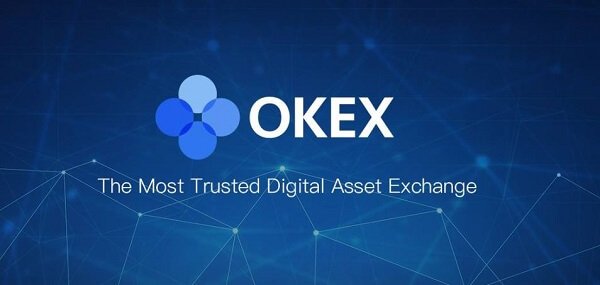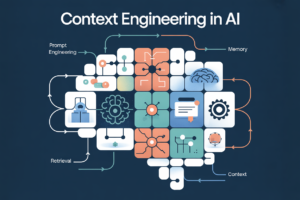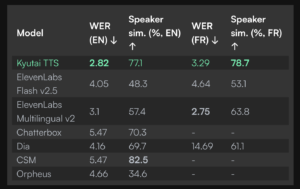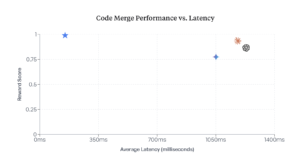Better Code Merging with Less Compute: Meet Osmosis-Apply-1.7B from Osmosis AI
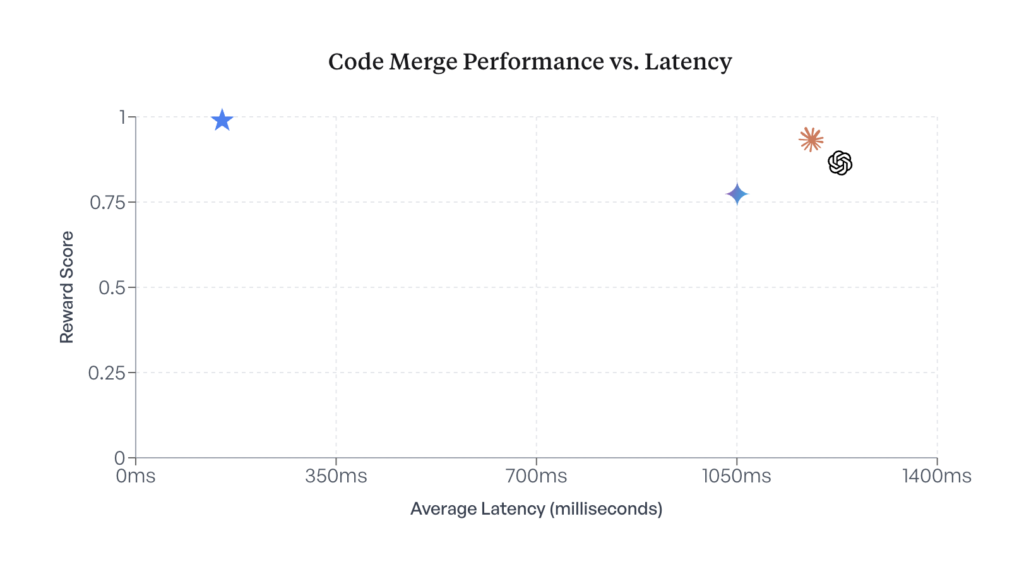
Osmosis AI has open-sourced Osmosis-Apply-1.7B, a fine-tuned variant of Qwen3-1.7B, designed to perform highly accurate and structured code merge tasks. Drawing inspiration from IDE agents like Cursor’s “instant apply,” Osmosis-Apply-1.7B is optimized for context-sensitive, function-level code edits. The model achieves strong performance with fewer parameters compared to much larger foundation models by leveraging code-specific formatting tags, a high-quality dataset, and Model Context Protocol (MCP) integration.
Purpose-Built for Code Merge Tasks
Unlike general-purpose LLMs that struggle with diff application and semantic merging, Osmosis-Apply-1.7B is trained specifically to apply structured edits at the function or block level. The model takes three structured inputs: (1) the original code, (2) the set of edits or diffs, and (3) the expected merge format. It then returns a revised code block where the change is applied within <edit> tags nested in a <code> block. This format aligns with production-grade expectations and simplifies validation.
Training and Reward Structure
Osmosis-Apply-1.7B was fine-tuned on approximately 100,000 real-world commits from the commitpackft dataset, representing under 15% of the full corpus. Each training sample was structured to represent practical developer workflows. A reward-based post-training system was used:
Full match (including formatting): reward = 1.0
Semantic match (ignoring blank lines): reward = 0.2
Incorrect or failed match: reward = 0.0
This reward schema reinforces high-fidelity outputs while allowing for some leniency in stylistic variation, closely mimicking how code reviews operate in practice.
Benchmark Results
Osmosis AI benchmarked the model using a 10,000-sample evaluation from the commitpackft dataset. The average reward scores demonstrate strong performance relative to larger LLMs:
These results highlight the model’s strength in applying localized changes while preserving semantics, formatting, and structure.
MCP Integration for Developer Workflows
A key feature of the model is its native support for the Model Context Protocol (MCP), enabling structured context invocation with file hierarchies, function names, and edit tags. The model adheres to the apply-code MCP spec, allowing seamless use in CLI tools and IDE agents. It returns changes scoped at the function level and marks edits using well-structured XML-style tags, which simplifies diff tracking and downstream tooling.
Developer Tooling and Use Cases
Osmosis AI has also released a reference implementation that supports both local inference and integration with services like vLLM or Gulp Server. The tooling includes CLI-based usage examples, MCP server implementation, and safe deployment guides.
Key use cases include:
IDE agents offering “instant apply” for user-specified changes
CI bots applying auto-refactor or review-based changes
Dataset generation pipelines for downstream fine-tuning
Code transformation tools with structure-aware merging logic
Format and Deployment
The model outputs edits wrapped in <code> and <edit> tags to ensure compatibility with automated validators. Inference-ready versions of the model are provided in multiple formats including safetensors and GGUF for efficient deployment. Osmosis-Apply-1.7B can be hosted locally or served in quantized mode for optimized inference on constrained hardware.
Availability and License
Osmosis-Apply-1.7B is available under the Apache-2.0 license and hosted on both Hugging Face and GitHub. The release includes all necessary scripts for inference, examples for MCP-compliant deployment, and structured formatting guides.
Conclusion
By open-sourcing Osmosis-Apply-1.7B, Osmosis AI addresses a key need for function-level, structure-aware code editing models. Unlike foundation models, this specialized model combines compact size with precision and format alignment. Its MCP integration, reward-based fine-tuning, and syntactic structure support make it an ideal candidate for real-world developer tooling.
Check out the GitHub Page, Hugging Face Page and Technical Details. All credit for this research goes to the researchers of this project. Also, feel free to follow us on Twitter, Youtube and Spotify and don’t forget to join our 100k+ ML SubReddit and Subscribe to our Newsletter.
Asif Razzaq is the CEO of Marktechpost Media Inc.. As a visionary entrepreneur and engineer, Asif is committed to harnessing the potential of Artificial Intelligence for social good. His most recent endeavor is the launch of an Artificial Intelligence Media Platform, Marktechpost, which stands out for its in-depth coverage of machine learning and deep learning news that is both technically sound and easily understandable by a wide audience. The platform boasts of over 2 million monthly views, illustrating its popularity among audiences.


